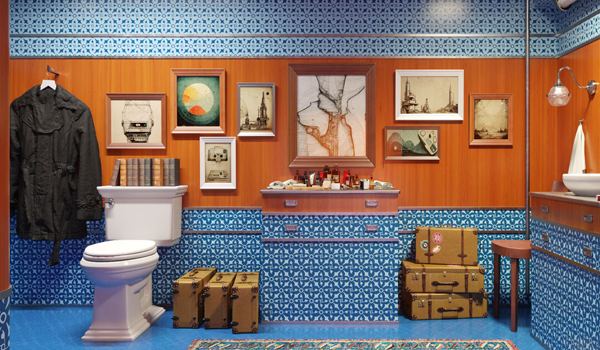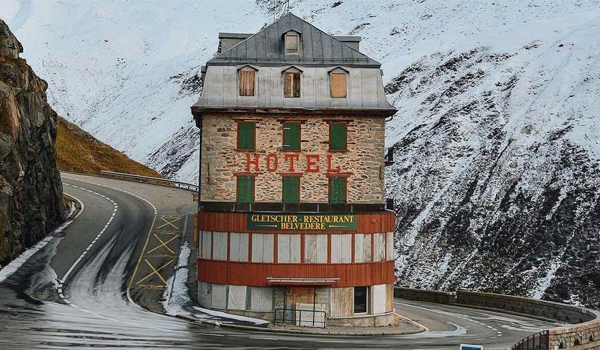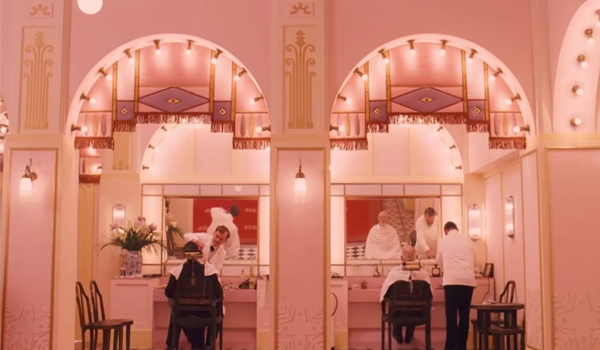Exploring the Wes Anderson Inspiration in Modern Filmmaking
When it comes to distinctive cinematic styles, few directors have left as lasting an impact as Wes Anderson. His unique approach to filmmaking has not only captivated audiences but also inspired countless creators across various disciplines. Whether you’re a filmmaker, designer, or simply a lover of art, there’s something profoundly compelling about Anderson’s work that speaks to the power of visual storytelling. In this article, we’ll delve into the Wes Anderson inspiration by exploring his unparalleled aesthetic, the meticulous symmetry that defines his films, the evocative use of color palettes, and the cinematic influences that have shaped his iconic style.
Exploring Wes Anderson’s Unique Aesthetic

Wes Anderson’s aesthetic is unmistakably his own, characterized by a blend of meticulous design, nostalgic elements, and a whimsical yet precise approach to filmmaking. This aesthetic doesn’t just happen; it’s the result of Anderson’s deep understanding and deliberate use of various artistic and cinematic techniques. From the symmetrical compositions to the carefully curated color schemes, every aspect of his films contributes to a cohesive visual narrative that is as engaging as it is unique. The Wes Anderson inspiration for many artists lies in his ability to turn every frame into a work of art, creating a visual language that communicates emotion, story, and character all at once.
The Art of Symmetry in Wes Anderson’s Films
One of the most defining features of Wes Anderson’s films is his use of symmetry. This technique is more than just a stylistic choice; it’s a narrative tool that brings balance and harmony to his stories. Anderson’s symmetrical compositions draw the viewer’s eye to the center of the frame, often highlighting a character or object of importance. This method of framing is deeply rooted in the idea that symmetry is naturally pleasing to the human eye, a concept Anderson uses to create a sense of order in his often chaotic and whimsical worlds.
In films like The Grand Budapest Hotel and Moonrise Kingdom, symmetry is used not only in the visual layout but also in the storytelling, where characters and plotlines are balanced against one another to create a cohesive whole. This meticulous attention to detail in symmetry is a hallmark of Anderson’s style and a key element of Wes Anderson inspiration for those looking to craft visually striking narratives.
The Impact of Color Palettes in Wes Anderson’s Storytelling
Color is another critical component of Anderson’s storytelling arsenal. His films are renowned for their distinctive color palettes, which are not just visually appealing but also deeply symbolic. Each color is chosen carefully to evoke specific emotions, highlight themes, and even to foreshadow events within the narrative. For instance, the use of rich reds and pinks in The Royal Tenenbaums or the pastel hues in The French Dispatch serve to enhance the mood and tone of each film, creating a vibrant, almost surreal atmosphere that draws the audience deeper into Anderson’s world.
These carefully selected palettes often reflect the emotional states of the characters or the underlying themes of the story. The Wes Anderson inspiration here lies in his ability to use color not just as a visual element, but as a narrative device that adds depth and meaning to his films.
Cinematic Inspirations: Directors Who Shaped Wes Anderson’s Style
Wes Anderson’s unique style didn’t emerge in a vacuum; it’s the result of years of study, admiration, and reinterpretation of the works of other filmmakers. Directors like François Truffaut, Stanley Kubrick, and Orson Welles have had a profound influence on Anderson’s approach to cinema. From Truffaut’s character-driven stories to Kubrick’s precision in framing, and Welles’ innovative use of deep focus and complex narratives, Anderson has absorbed these elements and made them his own.
Incorporating these influences, Anderson has developed a style that is both a homage to the great directors who came before him and a fresh, original approach to filmmaking. For those seeking Wes Anderson inspiration, studying these influences offers valuable insights into how to blend different cinematic techniques to create something uniquely personal.
The Theatricality of Wes Anderson’s Set Designs

Wes Anderson’s films are often described as visual feasts, where every frame is meticulously crafted to resemble a stage production. His approach to set design is theatrical in nature, with a strong emphasis on creating spaces that feel both lived-in and fantastical. This theatricality is not merely for aesthetic pleasure; it plays a crucial role in how stories are told within his films. The Wes Anderson inspiration is evident in how he uses set design to reinforce themes, evoke emotions, and develop characters. The environments he creates are not just backdrops; they are integral to the storytelling, often reflecting the inner worlds of the characters who inhabit them.
The next section will delve deeper into specific techniques Anderson uses in his set designs, such as knolling and planar composition, as well as the significance of props and costumes in his storytelling.
Crafting Worlds with Knolling and Planar Composition
One of the most distinctive elements of Wes Anderson’s set designs is his use of knolling and planar composition. Knolling, a practice where objects are arranged in parallel or at 90-degree angles, helps create a sense of order and control within the frame. This method is often used by Anderson to convey the obsessive or meticulous nature of his characters. For example, in The Life Aquatic with Steve Zissou, the ship’s cross-section is presented with an almost architectural precision, each room meticulously organized to reflect the structured, yet chaotic life of its crew.
Planar composition, another signature technique, involves positioning elements of the set along a flat plane, often with characters and objects aligned perpendicularly to the camera. This creates a stage-like effect, where depth is minimized, and the audience’s focus is drawn to the symmetry and detail within the frame. This approach is particularly evident in films like The Grand Budapest Hotel, where the hotel’s interiors are designed with a precision that mirrors the film’s themes of nostalgia and decay. The Wes Anderson inspiration here is clear: by using these techniques, Anderson crafts worlds that are both visually engaging and thematically rich, pulling the viewer deeper into his meticulously constructed universes.
The Role of Props and Costumes in Character Development
In Wes Anderson’s films, props and costumes are not merely accessories; they are extensions of the characters themselves. Each item a character interacts with is carefully chosen to reflect their personality, background, and emotional state. For instance, in The Royal Tenenbaums, the distinct attire of each character—from Margot’s fur coat and wooden finger to Richie’s tennis headband—serves as a visual shorthand for their identities and histories.
Props, too, play a significant role in character development. In Moonrise Kingdom, the suitcase full of records, books, and binoculars that Suzy carries symbolizes her longing for escape and her introspective nature. Similarly, in Fantastic Mr. Fox, the various objects Mr. Fox uses throughout the film—his tailored suits, his detailed plans—underscore his complex character, torn between his wild instincts and his desire for a civilized life.
These carefully selected props and costumes do more than just decorate the scenes; they tell a story of their own, adding layers of meaning to the narrative. For creators seeking Wes Anderson inspiration, paying attention to the details in props and costumes can be a powerful way to enhance character development and deepen the audience’s connection to the story.
Narrative Techniques Inspired by Childhood and Nostalgia

Wes Anderson’s films often transport viewers into worlds that feel both familiar and dreamlike, largely due to his narrative techniques rooted in childhood experiences and a deep sense of nostalgia. Anderson has a unique ability to capture the wonder, innocence, and even the melancholy of childhood, using these themes to create stories that resonate with audiences on an emotional level. This nostalgic lens is not just a thematic choice but a deliberate narrative strategy that shapes the way his stories unfold. The Wes Anderson inspiration found in these narrative techniques is a masterclass in how to evoke universal emotions through personal, often whimsical storytelling.
The following sections will explore how Anderson tells stories through the eyes of a child and how the music of the 1960s and 70s influences his narrative style.
Storytelling Through the Lens of a 12-Year-Old
One of the most distinctive aspects of Wes Anderson’s narrative style is his tendency to tell stories from the perspective of a child or an adult with a childlike view of the world. This technique is evident in films like Moonrise Kingdom and The Royal Tenenbaums, where the protagonists often navigate adult situations with a sense of innocence and wonder. By framing his narratives through the lens of a 12-year-old, Anderson captures the raw emotions and unfiltered perspectives that define childhood. This approach allows for a storytelling style that is both sincere and poignant, resonating deeply with audiences who remember their own childhoods with similar fondness and complexity.
The use of a child’s perspective also adds layers of irony and humor to Anderson’s films. The juxtaposition of youthful innocence with the often absurd or dysfunctional adult world creates a unique narrative tension that is both endearing and thought-provoking. This technique not only enriches the characters but also adds depth to the overall narrative, making it a powerful tool in Anderson’s storytelling arsenal.
The Influence of 1960s and 70s Music on Wes Anderson’s Narratives
Music plays a pivotal role in Wes Anderson’s films, serving as more than just a background score; it’s an integral part of the storytelling. Anderson often draws from the music of the 1960s and 70s, using these tracks to evoke specific moods, underscore emotional beats, and even comment on the narrative itself. Songs from artists like The Rolling Stones, David Bowie, and The Kinks are not chosen arbitrarily; they are meticulously selected to resonate with the themes of nostalgia and the passage of time that are central to many of Anderson’s films.
For instance, in The Royal Tenenbaums, the use of “These Days” by Nico adds a layer of melancholy to the scenes it accompanies, reinforcing the themes of lost youth and the complexities of family relationships. Similarly, in The Life Aquatic with Steve Zissou, David Bowie’s “Life on Mars?” performed in Portuguese by Seu Jorge, not only ties into the film’s maritime theme but also reflects the introspective journey of the protagonist. The Wes Anderson inspiration drawn from these musical choices illustrates how soundtracks can enhance the emotional depth and narrative cohesion of a film, making the music almost as crucial as the visuals in telling the story.
The Postmodern Influence on Wes Anderson’s Films

Wes Anderson’s films are a fascinating blend of styles, genres, and eras, creating a unique postmodern aesthetic that challenges traditional cinematic conventions. His work often reflects a collage of influences, where high art meets pop culture, and the past intertwines seamlessly with the present. This postmodern approach allows Anderson to create worlds that are both familiar and surreal, evoking a sense of nostalgia while simultaneously feeling entirely original. The Wes Anderson inspiration rooted in postmodernism is evident in his playful use of genre conventions, self-referential storytelling, and his penchant for mixing visual and narrative elements from different periods to craft a timeless appeal.
In the next section, we’ll explore how Anderson combines anachronistic styles to achieve this timeless quality, blending elements from various eras to create films that feel both classic and contemporary.
Mixing Anachronistic Styles for a Timeless Appeal
One of the hallmarks of Wes Anderson’s postmodern style is his use of anachronism—blending elements from different time periods to create a world that exists outside of conventional timelines. Anderson’s films are filled with vintage costumes, outdated technology, and settings that evoke various decades, yet these elements are combined in a way that makes the era difficult to pinpoint. This deliberate mixing of styles creates a timeless, almost dreamlike quality that enhances the narrative’s universality.
For example, in The Grand Budapest Hotel, the film is set in a fictional European country during the 1930s but is filled with design elements that span decades, from the Art Nouveau architecture to the 1960s-inspired costumes. This blending of time periods not only enriches the visual experience but also reinforces the film’s themes of memory, history, and the passage of time. Similarly, in Moonrise Kingdom, the 1960s setting is portrayed with a mix of authentic period details and modern sensibilities, creating a nostalgic yet fresh aesthetic.
Anderson’s use of anachronism is not just a visual choice but a narrative one as well. It allows him to explore timeless themes such as love, loss, and identity without being confined to the social or cultural norms of a specific era. This approach is a significant source of Wes Anderson inspiration for artists and filmmakers who seek to create work that transcends time, offering a fresh perspective on the human experience.
Conclusion
Wes Anderson’s films are more than just visual spectacles; they are rich, multi-layered stories that draw deeply from the wells of nostalgia, childhood wonder, and postmodern aesthetics. By blending elements from various time periods and employing unique narrative techniques, Anderson creates cinematic experiences that resonate with audiences long after the credits roll. The Wes Anderson inspiration evident in his work continues to influence a new generation of creators, encouraging them to explore the boundaries of storytelling in fresh and innovative ways.
For those looking to incorporate the essence of Wes Anderson inspiration into their own work, the key lies in embracing both the familiar and the unexpected. Whether through the meticulous use of color, the crafting of symmetrical compositions, or the integration of anachronistic elements, Anderson shows us that true creativity comes from reimagining the world around us through a lens of both reverence and whimsy.
